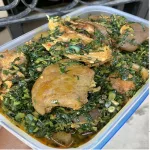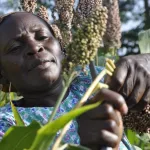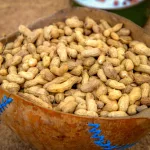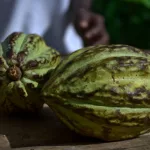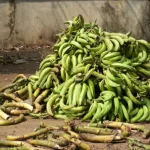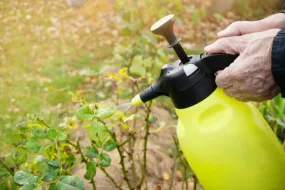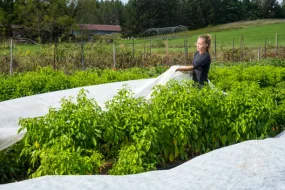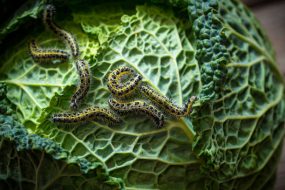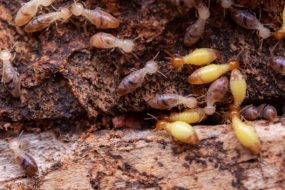In today’s world, where environmental sustainability and the quality of our food are paramount concerns, farmers are increasingly turning to eco-friendly crop protection methods. One such method that has gained widespread attention is Pyganic crop protection. This comprehensive guide will take you on a journey into the world of Pyganic crop protection, shedding light on its benefits, application methods, and its role in sustainable farming practices.
READ, ALSO >>>>>The Ultimate Step-By-Step Guide to Choosing the Right Agriculture Monitoring System for Your Farm
What is Pyganic Crop Protection?
Pyganic Crop Protection is a natural and eco-friendly approach to pest management in agriculture. It revolves around the use of insecticides that are derived from pyrethrin, a natural compound found in chrysanthemum flowers. These insecticides are known for their effectiveness in controlling a wide range of pests while posing minimal harm to beneficial insects, animals, and the environment.

The key features of Pyganic Crop Protection include:
- Environmentally Friendly: Pyganic products are biodegradable and break down quickly in the environment. This minimizes the risk of water contamination and reduces harm to non-target organisms, making it an eco-friendly choice for pest control.
- Safe for Beneficial Insects: Pyganic insecticides are selective in their action, targeting pest insects while sparing beneficial ones like pollinators and natural predators. This helps maintain a balanced ecosystem in agricultural fields, promoting natural pest control.
- Minimal Impact on Human Health: When used according to instructions, Pyganic crop protection products are generally considered less harmful to human health compared to synthetic pesticides. This makes them a safer option for both farmers and consumers.
- Organic Certification: Many Pyganic products are approved for use in organic farming. Farmers seeking organic certification can use Pyganic crop protection as a valuable tool to meet organic standards.
Overall, Pyganic Crop Protection offers a sustainable and responsible way to protect crops from pests while minimizing the negative impacts on the environment, beneficial organisms, and human health. It has gained popularity among farmers who prioritize eco-friendly and organic farming practices.
The Benefits of Pyganic Crop Protection
Pyganic Crop Protection offers a host of benefits for both farmers and the environment. Here are some of the key advantages:
READ, ALSO >>>>>The Ultimate Step-By-Step Guide to Choosing the Right Agriculture Monitoring System for Your Farm
- Environmentally Friendly: Pyganic products are biodegradable and break down rapidly in the environment. This eco-friendliness reduces the risk of contaminating water sources and causing harm to non-target organisms. Unlike synthetic pesticides, Pyganic insecticides leave behind no harmful residues.
- Safe for Beneficial Insects: Pyganic insecticides are highly selective in their action. They target pest insects while sparing beneficial ones like pollinators (e.g., bees) and natural predators (e.g., ladybugs). This selective nature helps maintain a balanced ecosystem in agricultural fields, promoting natural pest control without disrupting beneficial insect populations.
- Minimal Impact on Human Health: When used as directed, Pyganic crop protection products have a lower risk of causing harm to human health compared to synthetic pesticides. This is especially important for farmers who handle these products regularly. The reduced risk of exposure makes Pyganic a safer choice for those working in the fields.
- Organic Certification: Many Pyganic products are approved for use in organic farming. For farmers seeking organic certification, Pyganic crop protection is a valuable tool to meet organic standards. It allows them to control pests effectively while adhering to organic farming principles.
- Reduced Risk of Pesticide Resistance: Pyganic crop protection can help reduce the development of pesticide resistance in target pest populations. By using a natural insecticide with a different mode of action than synthetic chemicals, farmers can rotate and integrate Pyganic into their pest management strategy. This lowers the risk of pests evolving resistance to commonly used pesticides.
- Improved Food Safety: Pyganic crop protection aligns with the growing demand for food produced using sustainable and environmentally responsible practices. Consumers are increasingly concerned about the pesticides used on their food, and Pyganic offers a safer and more sustainable alternative.
- Enhanced Crop Quality: By minimizing the use of synthetic chemicals, Pyganic crop protection can contribute to improved crop quality. It helps maintain the natural balance of the ecosystem, ensuring healthier crops that are less stressed by pests and disease.
- Long-Term Sustainability: Pyganic crop protection supports the long-term sustainability of agriculture. It promotes practices that are less harmful to the environment and can help preserve the health of the soil, water, and surrounding ecosystems for future generations.
Pyganic Crop Protection is a sustainable and environmentally responsible choice for pest management in agriculture. Its benefits extend beyond pest control, encompassing safer working conditions for farmers, organic certification opportunities, and a positive impact on the overall quality of crops and the environment.
How to Use Pyganic Crop Protection
Using Pyganic Crop Protection effectively is essential to reap its benefits while ensuring the health of your crops and the environment. Here’s a step-by-step guide on how to use Pyganic Crop Protection:
1. Read and Follow Instructions:
- Start by carefully reading the label and instructions on the Pyganic product you’ve chosen. Different formulations may have specific guidelines for application and dilution.
2. Proper Mixing and Dilution:
- If you are using a concentrated Pyganic product, mix it with the appropriate amount of water as indicated on the label. Use a measuring device to ensure accurate dilution.
3. Timing is Crucial:
- Identify the life cycle stage of the target pests in your crops. Pyganic is most effective when applied during the vulnerable stages of pest development. Timing your application correctly maximizes its efficiency.
4. Thorough Coverage:
- When applying Pyganic, make sure to achieve thorough coverage of your crop foliage. This is crucial for effective pest control. Pay special attention to the undersides of leaves, as many pests hide there.
5. Choose the Right Equipment:
- Select appropriate application equipment, such as a sprayer, that allows you to distribute the Pyganic solution evenly. Calibrate your equipment to ensure accurate and consistent application.
6. Use Protective Gear:
- When handling Pyganic products, wear appropriate protective gear as specified on the product label. This may include gloves, long-sleeved clothing, and goggles to minimize contact with the skin and eyes.
7. Avoid Windy Conditions:
- Plan your Pyganic application on a calm day with minimal wind. Wind can carry the pesticide away from the target area, potentially affecting non-target organisms or areas.
8. Monitor and Rotate:
- Regularly monitor your crops for signs of pest infestations. If you observe increasing pest pressure or reduced effectiveness of Pyganic, consider rotating with other pest control methods to prevent resistance development.
9. Storage and Disposal:
- Store Pyganic products in their original containers in a cool, dry place away from children and pets. Dispose of empty containers according to local regulations, and avoid pouring excess solution down the drain.
10. Record Keeping:
- Maintain detailed records of your Pyganic applications. Note the date, crop stage, weather conditions, and the type of pests targeted. This documentation can be valuable for future planning and compliance with organic farming requirements.
11. Safety First:
- Always prioritize safety. In case of accidental exposure to Pyganic, follow the first aid instructions provided on the product label and seek medical attention if necessary.
12. Read the Re-Entry Interval (REI):
- Pay attention to the Re-Entry Interval specified on the label. This is the period during which it’s unsafe for humans to enter treated areas. Adhere to this interval for safety.
By following these guidelines, you can use Pyganic Crop Protection effectively and responsibly, maximizing its benefits while minimizing potential risks to human health and the environment. Remember that proper education and responsible application are essential for successful pest management with Pyganic.
READ, ALSO >>>>>The Ultimate Step-By-Step Guide to Choosing the Right Agriculture Monitoring System for Your Farm
Pyganic vs. Synthetic Pesticides
Comparing Pyganic Crop Protection to Synthetic Pesticides reveals significant differences in terms of their impact on the environment, safety, and effectiveness. Let’s explore these distinctions:
Pyganic Crop Protection:
-
Environmental Impact:
- Pro: Pyganic products are biodegradable and break down quickly in the environment. This reduces the risk of water contamination and harm to non-target organisms. Pyganic is considered environmentally friendly.
- Pro: Pyganic selectively targets pest insects while sparing beneficial ones, promoting a balanced ecosystem in agricultural fields.
-
Safety:
- Pro: When used as directed, Pyganic crop protection products have a lower risk of causing harm to human health compared to many synthetic pesticides. This is especially important for farmers who handle these products regularly.
- Pro: Pyganic is often approved for use in organic farming, aligning with organic standards and regulations.
-
Resistance Management:
- Pro: Pyganic can help reduce the development of pesticide resistance in target pest populations. Its mode of action is different from many synthetic chemicals, so rotating with Pyganic lowers the risk of pests evolving resistance.
Synthetic Pesticides:
-
Environmental Impact:
- Con: Many synthetic pesticides persist in the environment and can accumulate in soil and water. This poses a higher risk of long-term environmental damage and contamination.
- Con: Non-selective synthetic pesticides can harm both pest insects and beneficial ones, potentially disrupting the natural balance of ecosystems.
-
Safety:
- Con: Some synthetic pesticides have been associated with adverse health effects in humans, particularly with prolonged exposure or inadequate safety measures.
- Con: Many synthetic pesticides are not approved for use in organic farming and may not align with organic standards.
-
Resistance Management:
- Con: Prolonged use of synthetic pesticides can lead to the development of pesticide-resistant pest populations. This can necessitate the use of even stronger chemicals and create a cycle of increasing pesticide resistance.
In summary, Pyganic Crop Protection offers several advantages over synthetic pesticides, particularly in terms of its eco-friendliness, safety for humans, and compatibility with organic farming practices. It prioritizes the preservation of beneficial insects and minimizes environmental harm. Additionally, Pyganic’s different modes of action can contribute to effective pest management while reducing the risk of resistance development.
While synthetic pesticides may still have a role in certain situations, the increasing adoption of Pyganic and other natural pest control methods reflects a growing commitment to sustainable and environmentally responsible agriculture. Farmers are recognizing the long-term benefits of minimizing the use of synthetic chemicals and embracing alternatives like Pyganic for a healthier and more balanced agricultural ecosystem.
Conclusion
In conclusion, Pyganic Crop Protection emerges as a promising and sustainable solution for pest management in agriculture. Its unique characteristics, when compared to synthetic pesticides, underscore its significance in modern farming practices.
Environmental Stewardship:
Pyganic shines as an environmentally friendly choice. Its biodegradability and minimal residual impact make it a responsible option for protecting crops without harming the planet. By targeting pests while preserving beneficial insects, Pyganic fosters a healthier and more balanced agricultural ecosystem.
Human Health and Safety:
The reduced risk of adverse effects on human health is a compelling argument in favor of Pyganic. Farmers and workers who come into contact with Pyganic products can do so with greater peace of mind, knowing that their exposure is generally less hazardous than with some synthetic pesticides.
Organic Farming Compatibility:
Pyganic’s approval of organic farming aligns it with the principles of organic agriculture. It aids farmers seeking organic certification by providing an effective and approved means of pest control.
Resistance Management:
By offering a different mode of action than synthetic pesticides, Pyganic contributes to resistance management. Its use in rotation with other control methods can help slow the development of pesticide-resistant pest populations, ultimately preserving its effectiveness.
As consumers increasingly prioritize food safety and sustainability, Pyganic Crop Protection stands as a beacon of responsible farming. Its adoption not only benefits farmers but also supports healthier crops, a safer environment, and a more sustainable future for agriculture.
While synthetic pesticides may still have their place in specific situations, Pyganic’s attributes make it a valuable addition to the toolkit of modern farmers who aspire to practice agriculture in harmony with nature. By mastering Pyganic Crop Protection, farmers can cultivate bountiful harvests while safeguarding the planet for generations to come.
READ, ALSO >>>>>The Ultimate Step-By-Step Guide to Choosing the Right Agriculture Monitoring System for Your Farm

